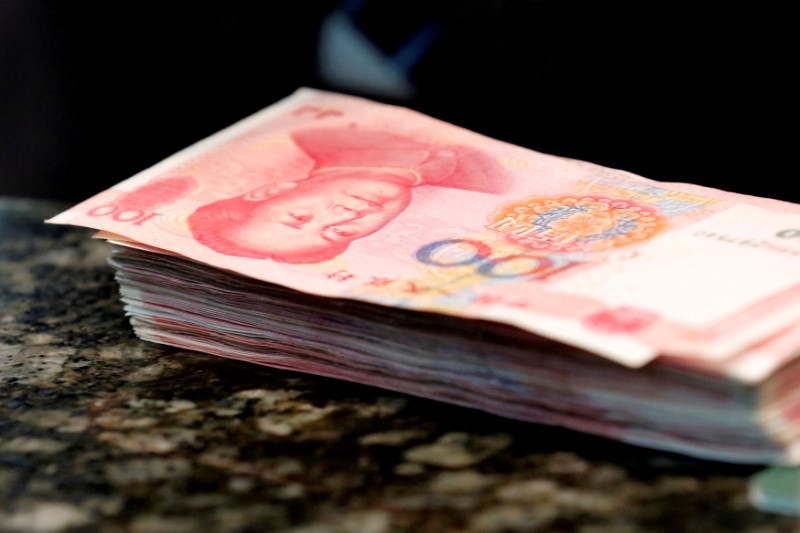By Tommy Wilkes
LONDON (Reuters) - Emerging market foreign exchange trading is growing at a double-digit clip this year, as economic and political worries stoke volatility and sell-offs in currencies such as the Chinese yuan, Turkish lira and Mexican peso, industry data shows.
'G10' currencies from the developed world still dominate the $5 trillion-a-day forex market but emerging markets represent a growing share, particularly in spot trading.
That growth offers welcome relief for banks that have struggled to wring more profit in recent years from trading relatively calm and directionless currencies like the dollar, euro and yen.
Emerging currency trading represented 17 percent of all daily average spot volumes this year, up from 7 percent in 2015, according to NEX Group (L:NXGN), which runs one of the biggest electronic trading platforms.
Include non-deliverable forwards (NDFs) -- derivatives used to trade tightly-controlled currencies offshore -- and the share of emerging currencies and NDFs rises to 27 percent this year.
"We've seen strong growth in Asia in NDFs and the offshore yuan has seen an explosion in activity," Tim Cartledge, Global Head of FX for NEX Markets said, attributing the rise to more electronic trading and volatility in key emerging economies.
Emerging forex trading volumes rose 34.6 percent between April and June versus the same period a year ago, while G10 volumes grew at less than 3 percent, NEX said.
At CLS -- a major settler of FX trades -- average daily spot trading volumes of the non-G10 currencies it settles have risen to $47 billion year-to-date, 9.5 percent of overall spot volumes and up from $36.9 billion in 2012.
By contrast, G10 spot volumes shrank to $448.6 billion from $480.8 billion in 2012, CLS said. The data excludes the bigger derivatives markets, which have been growing across currencies.
London remains the dominant forex trading centre, with a significant share of offshore yuan activity. But Hong Kong and Singapore are seeing increasing flows as global companies expand Asian operations.
The yuan
NEX's Cartledge said yuan trading had jumped 50 percent on last year and dollar/yuan was now its third most traded currency pair. CLS does not settle the yuan.
BIG SWINGS
Emerging currencies have swung wildly in 2018 as investors fled stock and bond markets, fretting that higher global borrowing costs could squeeze economic growth and even lead to debt defaults.
And the spectre of a full-blown U.S.-China trade conflict sent the yuan crashing to its worst monthly performance in June. Realised volatility -- a measure of price swings -- in the offshore yuan recently hit an 18-month high, Thomson Reuters data showed.
Turkey's lira
The rouble (RUB=) slid in April after new U.S. sanctions, while the Mexican peso
"In Latam, U.S. dollar/Mexican peso volumes have remained strong over the last two years," said Paul Clarke, Head of FX Venues at Thomson Reuters, a major player in currency trading.
"In Asia, there has been growth in pairs such as Indian rupee and Thai baht, and also strong volumes in pairs where there have been interventions or political events."
Thomson Reuters (TO:TRI), the parent of Reuters News, declined to give emerging market trading figures.
Bank traders also say emerging FX volumes are up substantially this year, though much of their flow remains on their own platforms and is therefore harder to track.
OPAQUE
Electronic platforms are enjoying a big rise in trading this year -- CLS reported a record first half of 2018, with volumes up 19 percent across spot, forwards and swaps.
Forex markets remain relatively opaque, with over-the-counter rather than exchange-based trading dominating, so data represents a window into the market rather than the full picture.
Derivative products such as swaps comprise a larger chunk of the market than spot trading, and have generally been expanding.

CLS said swap trading in the eight emerging market currencies it settles was up 28 percent since 2012, at $93 billion on average per day in 2018. G10 volumes averaged $1.155 trillion a day, up 40 percent since 2012.